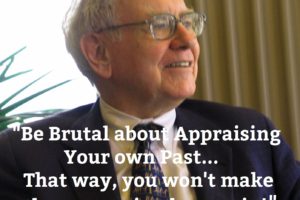Disclaimer: This is for entertainment and educational purposes only. This is not to be taken as investment advice. I am not an investment advisor, nor have I considered your personal situation as your fiduciary. In other words, any investment you make (or don't make) is completely your responsibility.
Today we’re going to look at a trade that can make you a 16.29% return on SNAP.
Today, Snapchat’s stock has taken a serious beating all the way down from a high of $15.30 yesterday, to as of writing this a price of $12.28. This marks a more than 18% drop in the stock today alone, not to mention over a 27.7% drop from it’s IPO price of $17. If you know a little investing wizardry, you can take advantage of big moves like this.
Let me show you…
Next Level Short Straddle
I’m going to show you a little trade I call a Next Level Short Straddle. Here are the rules before making a trade like this:
It needs to be a Next Level company:
Needs to be able to pass the 4 M analysis (Meaning, Moat, Management, MOS)
You have to want to own the company
You have to be able to understand all risk factors involved
Need to define Break-even, basis, and return
I don’t know SNAP well enough to know if it has a good future or not, but for those of you who do know the company, this looks like the best way to get in. Here’s what you do.
Here’s the Trade
Sell 1 DEC Put option with a strike price of $12 for premium of $0.76
Sell 1 DEC Call option with a strike price of $12 for a premium of $1.00
Buy 100 shares of SNAP @ $12.28
Remember: each option contract controls 100 shares of the underlying stock. So in this case we would be selling a Naked Put, and an in the money, covered call.
Figuring out Return
Time until expiration = 37 days
Premium = $0.79 + $0.93 = $1.72 x100 (100 shares) = $172
Old Cost basis = $12.28 x 100 shares = $1,228
New Cost basis = Share price - Premium
= $1228 - $172
= $1,056 or $10.56 per share
Return on cost = Premium / cost basis
=( $172 / $1,056) x 100
= 16.29% ROI (in 37 day period)
Remember: Selling options gives the option seller an obligation to sell 100 shares of stock to the call seller, and an obligation to buy 100 share of stock to the put buyer, if they are above the strike price for the call, and below the strike price for the put.
Three Possible Scenarios
Stock price moves up,
Call option is exercised at any price above $12, 100 shares are taken from you at the strike price level ($12)
Put option expires worthless. You keep the premium of both.
Return = $172
ROI = 16.29%
See what the return looks like and repeat the process.
Stock Price Moves Down
Put option exercised
Forced to buy 100 shares of SNAP @ $12
Call option Expires worthless
Keep both premiums of $172
New basis = ($12 + $10.56)
New bass = $11.28
Return on basis = 15.2%
Next sell two in the money calls one month out and repeat the process.
Stock price stays the same
Same process as #1.
Conclusion
So that’s the trade. I think more than anything this demonstrates the power of having a little extra knowledge can have on someone's portfolio. It is a very advanced trade and requires proper knowledge preferably from a guru the same way I learned. Or learn directly from me.
It looks pretty interesting trade considering that 16% return happens in only 35 days. If you annualize that you’re looking at a little over 160% for the year. Though the premiums will likely drop in the future. If the volatility remains high for SNAP you could see a very high yearly return repeating this trade while lowering your downside risk.
Note: this trade on SNAP has extra risk due to my lack of knowledge of the company and its current and future prospects it’s difficult for me to define the risk. Therefore the greatest risk is that the stock goes to $0 and the company goes bankrupt. Do your own due diligence before making any trade.
What do you think?
That’s it for today,
We’ll talk again soon.
~Ryan Chudyk~
Disclaimer: This is for entertainment and educational purposes only. This is not to be taken as investment advice. I am not an investment advisor, nor have I considered your personal situation as your fiduciary. In other words, any investment you make (or don't make) is completely your responsibility.





Leave a Reply
Get in the Conversation, Share your opinion.